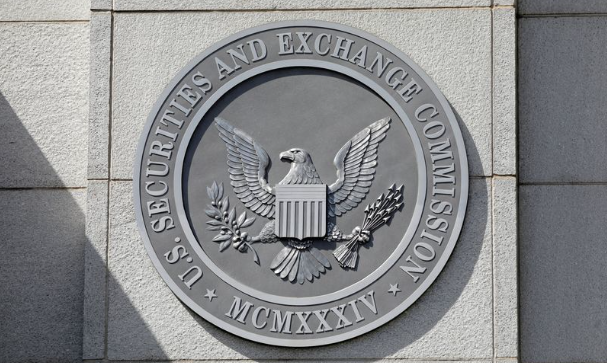
BIX ARTICLE
Rewiring of biggest bond market
Jan 23, 2024
|
7 min read
Featured Posts
Social Bonds Illustrative Use-Of-Proceeds Case Studies Coronavirus
Jul 06, 2020
|
2 min read
Sustainable Banking Network (SBN) Creating Green Bond Markets
Jul 06, 2020
|
2 min read
Why is Inflation Making a Big Comeback After Being Absent for Decades in the U.S.?
Mar 24, 2022
|
7 min read
SC issues Corporate Governance Strategic Priorities 2021-2023
Mar 29, 2022
|
3 min read
WASHINGTON: After years of regulatory tinkering, Washington is now forcing through the most rigorous overhaul of the world’s biggest bond market in decades.
Securities and Exchange Commission (SEC) chairman Gary Gensler, who once oversaw federal debt management at the US Treasury, has championed a move to require the vast majority of treasuries trading to migrate to a central counter-party clearing house.
It’s an intermediary between buyers and sellers that assumes ultimate responsibility for the transaction.
The phased-in process culminates in mid-2026 with the inclusion of all repurchase agreement transactions, a key tool used by hedge funds in the popular so-called basis trade that’s drawn scrutiny from Washington.
The initiative amounts to one of the most consequential efforts since a regulatory revamp in the wake of a 1991 treasury auction scandal involving the now-defunct Salomon Brothers.
Once complete, it should minimise the danger of contagion from a shock collapse of any one financial institution.
It’s akin to what authorities already did with interest-rate derivatives after the downfall of Lehman Brothers, which wreaked havoc in global money markets.
Because the clearinghouse assumes responsibility for completing transactions, it reduces the risk of a counter-party being unable to complete a deal.
But the reduction in systemic danger will come at a price: dealers will face higher risk-management costs as the SEC also tightens rules governing clearinghouses.
And, as dealers will collectively be on the hook for any one counter-party going down, they’re also likely to do more due diligence on clients. New collateral and margin rules may also mean less day-to-day liquidity.
For Gensler and fellow regulators, the move is key to strengthening resilience in the US$26 trillion US treasuries market, which has been roiled several times in recent years by sudden freezes in trading.
Only about 13% of the US$700bil-a-day in cash treasuries trading fully runs through the market’s sole clearinghouse, the Fixed Income Clearing Corp (FICC), helping convince authorities that a graduated phase-in was needed.
“It is going to transform the way people interact with the market and the way that the market functions,” said Nathaniel Wuerffel, head of market structure at Bank of New York Mellon Corp and former head of domestic markets at the Federal Reserve Bank of New York.
“This is by far the biggest of the reform effort that regulators have been working on over recent years.”
In past episodes of stress, “market participants start to pull back from their counter-parties because they’re worried about counter-party credit risk,” Wuerffel said.
While that will be reduced going forward, the additional risk-management costs involved in the new regime mean “on a day-to-day basis, liquidity is going to be slightly less continuous than it has been in the past”.
Hedge funds got a partial win in the SEC rules unveiled last month. They were exempted from using central clearing for cash trading of treasuries.
But they are far more active in the repo market, which they use for leveraged bets such as in the popular basis trade. Repos amount to about US$4 trillion on average a day, and only around 20% of that currently runs through a central counterparty clearing house (CCP).
“A lot of finance doesn’t lower risk. It just moves it to parties more willing and able to hold it for a price,” Gensler said in an interview last week.
“Higher volatility in the underlying market coupled with high leverage is where you can see shocks in a system,” he said. “Central clearing is one of those things in finance that, on net, lowers risk.”
CCPs will be required to establish standards for margins that dealers must post for their trades, separate from what they might have been setting for their customers.
That may end up crimping hedge funds’ basis trades, where leverage is used to take advantage of price differences between treasuries and futures.
“Repo is the major funding source for a lot of the basis trades, and a lot of the market scares over the last decade were due to repo shocks,” said Kevin McPartland, head of market structure research at Coalition Greenwich.
Today, there’s only one CCP for treasuries, the FICC, a subsidiary of the Depository Trust and Clearing Corp (DTCC).
While there’s potential for new entrants, central clearing is a capital-intensive business and costly to set up. That leaves risk concentrated in the single current operator.
“We see this expansion to broaden participation in central clearing as a natural evolution that FICC is well-positioned to execute on,” a DTCC spokesperson said.
A key element of CCPs involves a collective backstop in the case of one member’s demise, not unlike the federal deposit insurance kitty that banks pay into. The CCP pools members’ capital to ensure that losses at one firm don’t harm others.
The platforms also have what’s called a default fund, known as a waterfall, where bank members deposit cash and securities to be held in reserve as an additional level of loss protection.
While members must pony up to that reserve, one advantage of the CCP platform is a broader netting out of trades between market participants each day.
That potentially could encourage dealers such as big banks to engage in more treasuries trading. And that in turn could work to boost liquidity, the ease of being able to buy or sell.
“In theory, clearing should free up balance sheets at the primary dealer level through the netting process,” said Amar Reganti, a former deputy director of the Treasury’s Office of Debt Management, who’s now a fixed-income strategist at Wellington Management. “That’s a benefit.”
It may be particularly helpful in a world where big banks haven’t expanded their trading capacity at anywhere near the magnitude of the growth of the market itself.
That’s in part thanks to the 2014 introduction of the so-called supplementary leverage ratio rule, which compels financial institutions to hold capital against their portfolios, including inventories of treasuries.
Big banks are also now facing prospects of tighter capital rules from the US Federal Reserve.
“While central clearing of repo and treasuries could help improve market resilience, the change is highly unlikely to fully resolve the broader liquidity decline in recent years,” said Gennadiy Goldberg, head of US rates strategy at TD Securities.
“Dealer balance sheets remain constrained, increased capital requirements are coming” and treasury supply keeps rising, he said.
Among the awaited next steps are the FICC’s proposed rule changes on issues including margins to bring market structure into line with the SEC’s regulations. — Bloomberg
Disclaimer
The information provided in this report is of a general nature and has been prepared for information purposes only. It is not intended to constitute research or as advice for any investor. The information in this report is not and should not be construed or considered as an offer, recommendation or solicitation for investments. Investors are advised to make their own independent evaluation of the information contained in this report, consider their own individual investment objectives, financial situation and particular needs and should seek appropriate personalised financial advice from a qualified professional to suit individual circumstances and risk profile.
The information contained in this report is prepared from data believed to be correct and reliable at the time of issuance of this report. While every effort is made to ensure the information is up-to-date and correct, Bond and Sukuk Information Platform Sdn Bhd (“the Company”) does not make any guarantee, representation or warranty, express or implied, as to the adequacy, accuracy, completeness, reliability or fairness of any such information contained in this report and accordingly, neither the Company nor any of its affiliates nor its related persons shall not be liable in any manner whatsoever for any consequences (including but not limited to any direct, indirect or consequential losses, loss of profits and damages) of any reliance thereon or usage thereof.
YOU MAY ALSO LIKE
ARTICLE
Dec 23, 2025
|
5 min read
ARTICLE
Dec 22, 2025
|
6 min read
ARTICLE
Dec 18, 2025
|
7 min read
ARTICLE
Dec 16, 2025
|
5 min read



